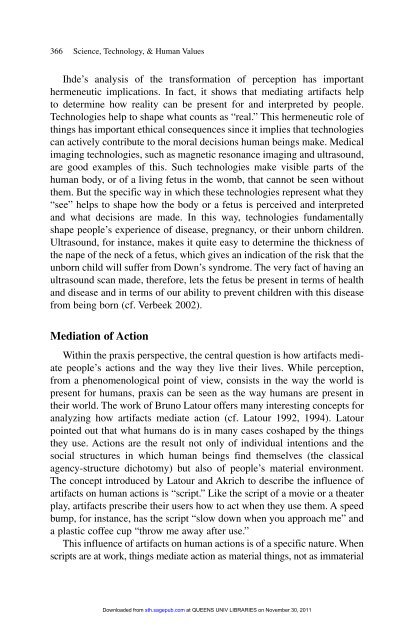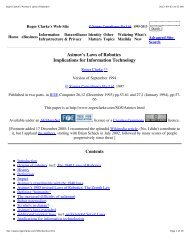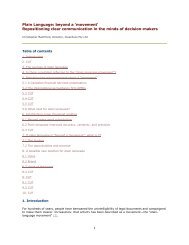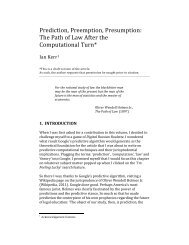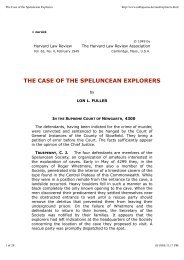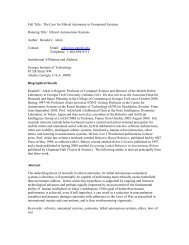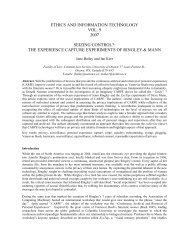Materializing Morality: Design Ethics and Technological Mediation.
Materializing Morality: Design Ethics and Technological Mediation.
Materializing Morality: Design Ethics and Technological Mediation.
You also want an ePaper? Increase the reach of your titles
YUMPU automatically turns print PDFs into web optimized ePapers that Google loves.
366 Science, Technology, & Human Values<br />
Ihde’s analysis of the transformation of perception has important<br />
hermeneutic implications. In fact, it shows that mediating artifacts help<br />
to determine how reality can be present for <strong>and</strong> interpreted by people.<br />
Technologies help to shape what counts as “real.” This hermeneutic role of<br />
things has important ethical consequences since it implies that technologies<br />
can actively contribute to the moral decisions human beings make. Medical<br />
imaging technologies, such as magnetic resonance imaging <strong>and</strong> ultrasound,<br />
are good examples of this. Such technologies make visible parts of the<br />
human body, or of a living fetus in the womb, that cannot be seen without<br />
them. But the specific way in which these technologies represent what they<br />
“see” helps to shape how the body or a fetus is perceived <strong>and</strong> interpreted<br />
<strong>and</strong> what decisions are made. In this way, technologies fundamentally<br />
shape people’s experience of disease, pregnancy, or their unborn children.<br />
Ultrasound, for instance, makes it quite easy to determine the thickness of<br />
the nape of the neck of a fetus, which gives an indication of the risk that the<br />
unborn child will suffer from Down’s syndrome. The very fact of having an<br />
ultrasound scan made, therefore, lets the fetus be present in terms of health<br />
<strong>and</strong> disease <strong>and</strong> in terms of our ability to prevent children with this disease<br />
from being born (cf. Verbeek 2002).<br />
<strong>Mediation</strong> of Action<br />
Within the praxis perspective, the central question is how artifacts mediate<br />
people’s actions <strong>and</strong> the way they live their lives. While perception,<br />
from a phenomenological point of view, consists in the way the world is<br />
present for humans, praxis can be seen as the way humans are present in<br />
their world. The work of Bruno Latour offers many interesting concepts for<br />
analyzing how artifacts mediate action (cf. Latour 1992, 1994). Latour<br />
pointed out that what humans do is in many cases coshaped by the things<br />
they use. Actions are the result not only of individual intentions <strong>and</strong> the<br />
social structures in which human beings find themselves (the classical<br />
agency-structure dichotomy) but also of people’s material environment.<br />
The concept introduced by Latour <strong>and</strong> Akrich to describe the influence of<br />
artifacts on human actions is “script.” Like the script of a movie or a theater<br />
play, artifacts prescribe their users how to act when they use them. A speed<br />
bump, for instance, has the script “slow down when you approach me” <strong>and</strong><br />
a plastic coffee cup “throw me away after use.”<br />
This influence of artifacts on human actions is of a specific nature. When<br />
scripts are at work, things mediate action as material things, not as immaterial<br />
Downloaded from sth.sagepub.com at QUEENS UNIV LIBRARIES on November 30, 2011


